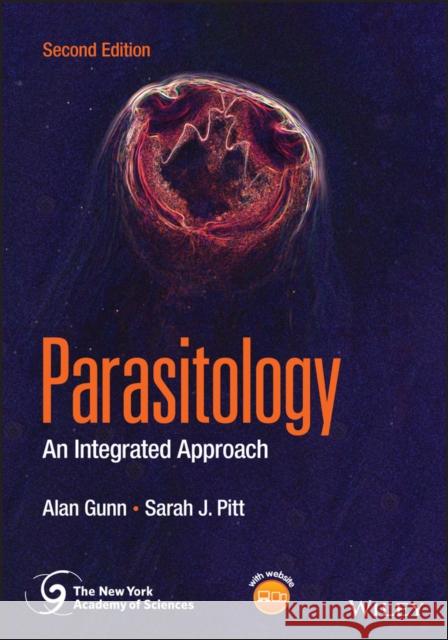Parasitology: An Integrated Approach » książka



Parasitology: An Integrated Approach
ISBN-13: 9781119641193 / Angielski / Miękka / 2022 / 576 str.
Parasitology: An Integrated Approach
ISBN-13: 9781119641193 / Angielski / Miękka / 2022 / 576 str.
(netto: 286,50 VAT: 5%)
Najniższa cena z 30 dni: 299,59
ok. 30 dni roboczych
Dostawa w 2026 r.
Darmowa dostawa!
Preface xvAbout the Companion Website xvii1 Animal Associations and the Importance of Parasites 11.1 Introduction 11.2 Animal Associations 11.3 Parasite Hosts 101.4 Zoonotic Infections 131.5 The Co-evolution of Parasites and Their Hosts 131.6 Parasitism as a 'Lifestyle': Advantages and Limitations 171.7 The Economic Cost of Parasitic Diseases 181.8 Why Parasitic Diseases Remain a Problem 222 Taxonomy 272.1 Introduction 272.2 Viruses: A Special (Unresolved) Case 282.3 Taxonomic Hierarchy 282.4 Kingdom Protista 302.5 Kingdom Animalia 313 Parasitic Protozoa Part A: Phyla Rhizopoda, Metamonada, Apicomplexa 333.1 Introduction 333.2 Phylum Rhizopoda 343.3 Phylum Metamonada 423.4 Phylum Apicomplexa 493.5 Subclass Coccidiasina 604 Parasitic Protozoa Part B: Phylum Kinetoplastida; Parasitic Algae and Fungi 744.1 Introduction 744.2 Phylum Kinetoplastida 744.3 Phylum Chlorophyta 964.4 Kingdom Fungi 975 Platyhelminth and Acanthocephalan Parasites 1015.1 Introduction 1015.2 Phylum Platyhelminthes 1015.3 Class Cestoda 1255.4 Phylum Acanthocephala 1456 Nematode Parasites 1486.1 Introduction 1486.2 Class Enoplea 1506.3 Class Rhabdita 1567 Arthropod Parasites 1827.1 Introduction 1827.2 Phylum Chelicerata 1837.3 Phylum Crustacea 1947.4 Subphylum Hexapoda 2008 Parasite Transmission 2298.1 Introduction 2298.2 Contaminative Transmission 2308.3 Transmission Associated with Reproduction 2348.4 Autoinfection 2398.5 Nosocomial Transmission 2398.6 Active Parasite Transmission 2408.7 Hosts and Vectors 2418.8 Host Factors 2468.9 Co-Transmission and Interactions Between Pathogens 2548.10 Environmental Factors 2569 Immune Reactions to Parasitic Infections 2619.1 Introduction 2619.2 Invertebrate Immunity 2629.3 Vertebrate Immunity 2659.4 Innate Immunity to Parasites 2729.5 Adaptive Immune Reactions to Parasites 2759.6 Microbiomes and Host Immune Reactions to Parasites 2779.7 Avoiding the Host Immune Response 2789.8 Immunity to Malaria 2849.9 Schistosoma spp. and Hepatitis C Virus Interactions 2899.10 HIV-AIDS and Parasitic Infections 28910 Pathology Part A: Factors Influencing Pathogenesis, How Parasites Cause Pathology, Types of Pathology 29510.1 Introduction 29610.2 Factors Influencing Pathogenesis 29610.3 Mechanisms By Which Parasites Cause Pathology 29810.4 Types of Pathology 30011 Pathology Part B: Damage to Specific Organs; Co-Infections and Pathogenesis 32211.1 Introduction 32211.2 Damage to Specific Organs 32211.3 Co-Infections and Pathogenesis 34412 The Useful Parasite 34712.1 Introduction: The Goodness of Parasites? 34712.2 The Importance of Parasites for the Maintenance of a Healthy Immune System 34812.3 The Use of Parasites to Treat Medical Conditions 35512.4 Parasites as Sources of Novel Pharmaceutically Active Substances 36612.5 Parasites as Biological Control Agents 36912.6 Parasites as Forensic Indicators 37213 The Identification of Protozoan and Helminth Parasites 37513.1 Laboratory Testing for Parasitic Infections: Introduction 37513.2 Importance of Correct Identification 37613.3 Properties of an Ideal Diagnostic Test 37713.4 Isolation of Parasites 37913.5 Identification from Gross Morphology 38213.6 Biochemical Techniques for Identification 38613.7 Immunological Techniques for Identification 38713.8 Molecular Techniques for Identification 38913.9 Diagnostic Testing of Parasitic Infections Outside the Laboratory: Introduction 39314 Parasite Treatment 40314.1 Introduction 40314.2 The Ideal Antiparasitic Drug 40314.3 Pharmaceutical Drugs 40914.4 DNA/RNA Technology 41114.5 Molecular Chaperones (Heat Shock Proteins) 41414.6 Nanotechnology 41514.7 Quantum Dots 41714.8 Natural Remedies 41714.9 Homeopathy 42115 Parasite Vaccines 42215.1 Introduction 42215.2 The Design and Use of Vaccines 42315.3 Herd Immunity 42315.4 Factors Limiting the Production of Commercial Antiparasitic Vaccines 42415.5 Properties of an Ideal Vaccine 42415.6 Types of Vaccine 42615.7 Identification of Antigens for Use in Anti-parasite Vaccines 43215.8 Vaccine Delivery 43315.9 Vaccines Against Malaria 43415.10 Nanobodies (Single Domain Antibodies) 43515.11 Problems with Vaccination Strategies 43516 Parasite Control 43716.1 Introduction 43716.2 Eradication, Elimination, and Control 43916.3 Education 44116.4 Environmental Modification and Cultural Control 44216.5 Remote Sensing and GIS Technology 44416.6 Whether to Treat the Individual or the Population 44516.7 Piggy-Backing Control Programmes 44716.8 Disruptions to Control Programmes 44716.9 Role of Governments, Foundations, and Aid Organisations 449References 452Index 521
Dr. Alan Gunn has an undergraduate degree in Applied Zoology and a PhD in parasite biochemistry. He is Principal Lecturer and Subject Leader for Biosciences at the School of Biological and Environmental Sciences at Liverpool John Moores University, UK. He has published research papers on many aspects of parasitology and taught parasitology to undergraduates for over 30 years. As well as authoring the successful first edition of 'Parasitology: An integrated approach' he has also written 'Essential Forensic Biology', the third edition of which was published by Wiley-Blackwell in 2019.Dr. Sarah J. Pitt has an undergraduate degree in Microbiology, MSc in Medical Parasitology & Applied Entomology, and a PhD in Microbiology. She is Principal Lecturer in Microbiology at the School of Applied Sciences at the University of Brighton, UK, and a Fellow of the Institute of Biomedical Science. She has published in parasitology with a particular focus in clinical and diagnostic parasitology. She gained extensive practical parasitological knowledge living and working in Zimbabwe and Tajikistan. She has been teaching parasitology at undergraduate and postgraduate levels for over 20 years. As well as co-authoring the first edition of 'Parasitology: An integrated approach', she has also written 'Clinical Microbiology for Diagnostic Laboratory Scientists', published by Wiley-Blackwell in January 2018.
1997-2025 DolnySlask.com Agencja Internetowa
KrainaKsiazek.PL - Księgarnia Internetowa









